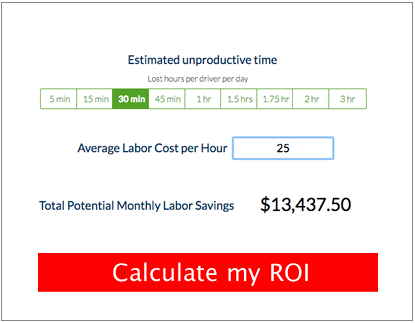Questions?
(888) 803-0200
learnmore@fieldlogix.com
We WILL NOT sell or share your info with anyone.
Guide for Evaluating Telematics Technology
These 4 tips will help you determine if the technology is right for you.
Wouldn’t you like to save over $6,000 per employee annually, reduce the time it takes to supervise your employees, and streamline your driver management? The great news is that telematics technology has proven to help organizations accomplish all of the above for years.
When evaluating this type of technology, the biggest challenge is in determining if it makes sense for your organization. To help you out, we put together a quick guide for evaluating the technology and determining if it is a good investment for your organization.
For years, all types of organizations have been using telematics technology to cut labor and fuel costs. They have been using solutions ranging from simple mobile apps to comprehensive GPS fleet management software. After adopting telematics technology, nearly all organizations have realized significant cost savings, primarily with labor and fuel expenses. In fact, Motorola conducted a survey in 2008 that found that fleets adopting telematics technology realize an average annual labor savings of $5,484 per driver and a 13.2% reduction in fuel costs.
When evaluating fleet telematics technology, it is important to consider these four factors:
1. Return on Investment
How much money will telematics save your organization? It only make sense to invest in the technology if it cuts labor and fuel costs, increases revenue, or reduces the amount of time your managers take to supervise your employees. You want to determine the labor savings based on labor costs per hour, time saved per day, and days worked per week. You want to determine fuel savings by calculating the average fuel costs per vehicle per month and the percentage saved with GPS technology. Increasing revenue can be calculated by determining the number of additional jobs per day, the billing rate per job, and the number of employees completing the work. To make it easy for you, we created this simple ROI calculator that already has the formulas in place and allows you to walk through several cost savings scenarios.
2. Your Needs
Figure out what you hope to accomplish with telematics technology. Is it improving driver safety, improving customer service, or reducing overtime costs? Each of these needs would require a specific feature set from any of the systems that you are evaluating. This also helps avoid the trap of paying extra for a system with extra “bells and whistles” that you would rarely, if ever, use.
3. Relevant Telematics Technology Features
Focus on which features you need to meet your needs… Are they real-time tracking & dispatching, safety monitoring, messaging, customer ETA alerts & proof of service, or a time clock? Also, be sure that the features are easy to configure and access. This also ensures that you select the best telematics system for your needs and you are not overpaying for something that you may not utilize.
4. Telematics System Cost
Make sure you weigh the costs of the systems along with the benefits. Although one app may be very low cost (or even free), it may not sufficiently meet all of your needs. On the other hand, if an app is very costly, you have to ensure that you will utilize a majority of the features that you are paying for. It is also great to look for systems that have various service plans that allow you to upgrade or downgrade as your business and driver management needs change over time.
About FieldLogix
Since 2002, FieldLogix has been providing an award-winning Field Resource Management solution to companies such as Coca-Cola and Coca-Cola. Our system is proven to reduce labor and fuel costs, increase revenue, improve driver safety, streamline operations, and improve customer service.


